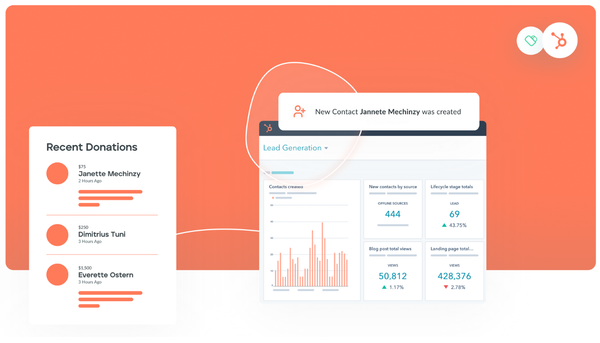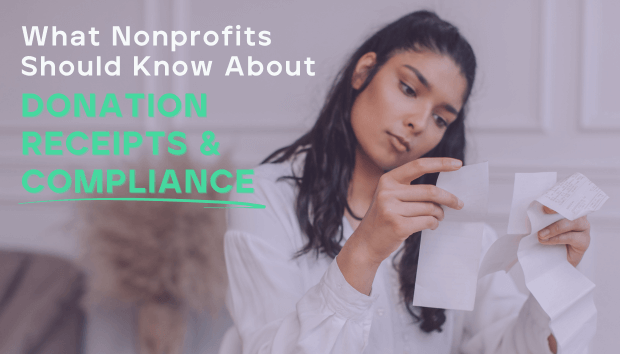The Art of Creating Emotional Connections: How Donor Stories Can Boost Your Fundraising Impact
Build lasting donor connections through emotional storytelling. Donor stories inspire action, trust, and change. Leverage these tales to transform your nonprofit's impact and create a community of support.

Fundraising is not just about asking for donations; it's about building relationships and creating emotional connections with donors. When donors feel a deep emotional connection to a cause, they are more likely to give and continue supporting it. Emotional connections tap into the human desire to make a difference and be part of something meaningful. It's crucial for nonprofits to understand the power of emotional connections and how they can leverage them to enhance their fundraising impact.
To create emotional connections, nonprofits must go beyond sharing statistics and facts. They need to tell compelling stories that resonate with their donors on an emotional level. Donor stories have the power to humanize the cause and make it relatable. When donors hear about the impact their contributions have made in someone's life, it triggers empathy and a sense of purpose. These stories become a powerful tool for nonprofits to connect with donors and inspire them to take action.
Understanding the power of donor stories
Donor stories hold immense power in creating emotional connections because they allow donors to see the direct impact of their contributions. These stories give a voice to the individuals or communities that have been helped by the nonprofit's work. By sharing these stories, nonprofits can showcase the tangible difference they are making in the world.
Donor stories also provide authenticity and credibility to the fundraising efforts. When donors hear about the experiences of real people whose lives have been positively transformed, it instills confidence and trust in the organization. Donors want to know that their donations are making a genuine impact, and donor stories provide the evidence they seek.
How storytelling can impact nonprofits
Storytelling is an art that can transform the way nonprofits engage with their audience. When done effectively, storytelling can captivate donors' attention and inspire them to become active participants in the cause. It allows nonprofits to convey their mission and values in a way that resonates deeply with supporters.
Effective storytelling strategies involve identifying the core message, creating relatable characters, and constructing a narrative that engages the audience emotionally. By painting a vivid picture of the challenges faced by the individuals or communities being helped, nonprofits can evoke empathy and compassion. Donors are more likely to connect emotionally when they can visualize the struggles and triumphs of those they are supporting.
Crafting effective storytelling strategies
Crafting effective storytelling strategies requires a thoughtful approach. Nonprofits should begin by identifying the key message they want to convey through their stories. This message should align with the organization's mission and values, and it should be clear and concise. Once the message is defined, nonprofits can move on to creating relatable characters.
Relatable characters are crucial because they serve as the bridge between the organization and the donors. These characters can be the individuals directly impacted by the nonprofit's work or the volunteers and staff members who are dedicated to the cause. By showcasing the people behind the scenes, nonprofits can establish a personal connection with their donors.
The narrative structure is another essential aspect of effective storytelling. Nonprofits should aim to create a story arc that captures the attention from the beginning and leads to a satisfying resolution. This structure can include introducing the problem or challenge, highlighting the nonprofit's intervention, and demonstrating the positive outcomes. By structuring the story in this way, nonprofits can engage donors throughout the narrative and leave them feeling inspired and hopeful.
Using social media to amplify donor stories
Social media has revolutionized the way nonprofits can share donor stories and amplify their impact. Platforms like Facebook, Instagram, and Twitter provide an opportunity to reach a wide audience and engage with supporters on a more personal level.
Nonprofits can leverage social media by sharing compelling visuals, videos, and testimonials that highlight the impact of their work. These posts can be accompanied by short captions or quotes from the donor stories to provide a glimpse into the narrative. By using hashtags and tagging relevant individuals or organizations, nonprofits can increase the visibility of their donor stories and encourage others to share them.
Social media also allows for real-time engagement and interaction with donors. Nonprofits can encourage supporters to share their own stories or experiences related to the cause, creating a sense of community and connection. By responding to comments and messages, nonprofits can further nurture relationships with their donors and make them feel valued and appreciated.
Showcasing achievements through donor stories
Donor stories are not only a tool for creating emotional connections; they are also a powerful way to showcase the achievements of a nonprofit. By highlighting the positive outcomes and successes resulting from their work, nonprofits can inspire donors to continue supporting their cause.
When sharing donor stories, nonprofits should focus on the measurable impact they have made. For example, they can highlight the number of lives changed, the increase in educational opportunities, or the improvements in healthcare access. By quantifying the achievements, nonprofits provide tangible evidence of the effectiveness of their programs.
In addition to quantitative measures, nonprofits should also emphasize the qualitative impact of their work. Sharing personal anecdotes and testimonials from individuals whose lives have been transformed adds depth and authenticity to the donor stories. It helps donors connect emotionally and reinforces the significance of their contributions.
Real-life fundraising story examples
To illustrate the power of donor stories, let's explore a few fundraising story examples.
The Story of Lucy: Lucy was a young girl who grew up in poverty and faced numerous challenges. Through the support of a nonprofit organization, she was able to access education and pursue her dreams. By sharing Lucy's story, the nonprofit was able to inspire countless donors to contribute to their cause, ensuring that other children like Lucy could also have a brighter future.
The Journey of Carlos: Carlos was a war veteran who struggled with PTSD and homelessness. A nonprofit dedicated to supporting veterans provided him with housing, counseling, and job training. Carlos's story touched the hearts of many donors, leading to increased support for the organization's efforts to help other veterans in need.
The Impact of Maria's Donations: Maria, a regular donor to a local food bank, shared her personal journey of overcoming food insecurity. Her story resonated with others who had experienced similar challenges, and it motivated them to contribute to the food bank's mission. Maria's donations not only helped her own community but also inspired others to join the cause.
These examples demonstrate how donor stories can create emotional connections and drive meaningful action. They showcase the real impact that nonprofits can achieve through effective storytelling.
Elevating fundraising efforts through emotional connections
By harnessing the power of emotional connections, nonprofits can elevate their fundraising efforts to new heights. When donors feel emotionally connected to a cause, they become more engaged, more loyal, and more likely to support the organization long-term.
To create emotional connections, nonprofits should continuously share donor stories that highlight the impact of their work. They should focus on crafting compelling narratives that engage donors on an emotional level. By using relatable characters, clear messaging, and a well-structured narrative, nonprofits can captivate donors' attention and inspire them to take action.
Nonprofits should also leverage social media platforms to amplify their donor stories and engage with supporters in real-time. By sharing visuals, videos, and testimonials, nonprofits can reach a wider audience and foster a sense of community around their cause.
Increasing donor engagement with storytelling
Storytelling is a powerful tool for increasing donor engagement. When donors feel emotionally connected to a cause, they are more likely to stay engaged and continue supporting the organization. By consistently sharing donor stories and showcasing the achievements resulting from their work, nonprofits can nurture relationships with their donors and keep them invested in the cause.
Nonprofits should consider incorporating donor stories into their fundraising campaigns, events, and newsletters. These stories can be shared through various mediums, such as written articles, videos, or podcasts. By diversifying the storytelling formats, nonprofits can cater to different preferences and increase the chances of capturing donors' attention.
In addition to sharing donor stories, nonprofits should also encourage donors to share their own experiences and stories related to the cause. By providing platforms for supporters to share their voices, nonprofits create a sense of community and foster a deeper connection with their donors.
Conclusion: Harnessing the power of donor stories for impactful fundraising
In conclusion, creating emotional connections through donor stories is an art that nonprofits must master to boost their fundraising impact. By sharing compelling narratives that resonate with donors on an emotional level, nonprofits can inspire action, build trust, and cultivate long-term support.
Understanding the importance of emotional connections and the power of donor stories is crucial for nonprofits seeking to create lasting change. By crafting effective storytelling strategies, leveraging social media platforms, showcasing achievements, and increasing donor engagement, nonprofits can harness the full potential of donor stories to elevate their fundraising efforts.
Donor stories have the power to transform the way nonprofits engage with their audience. They humanize the cause, instill empathy, and inspire donors to make a difference. By embracing the art of creating emotional connections, nonprofits can unlock a world of possibilities and truly maximize their fundraising impact.
Let Donately help you make a difference today! Visit our website to learn more about our best-in-breed fundraising tools and get started today! Together, we can create lasting impact and transform lives.





